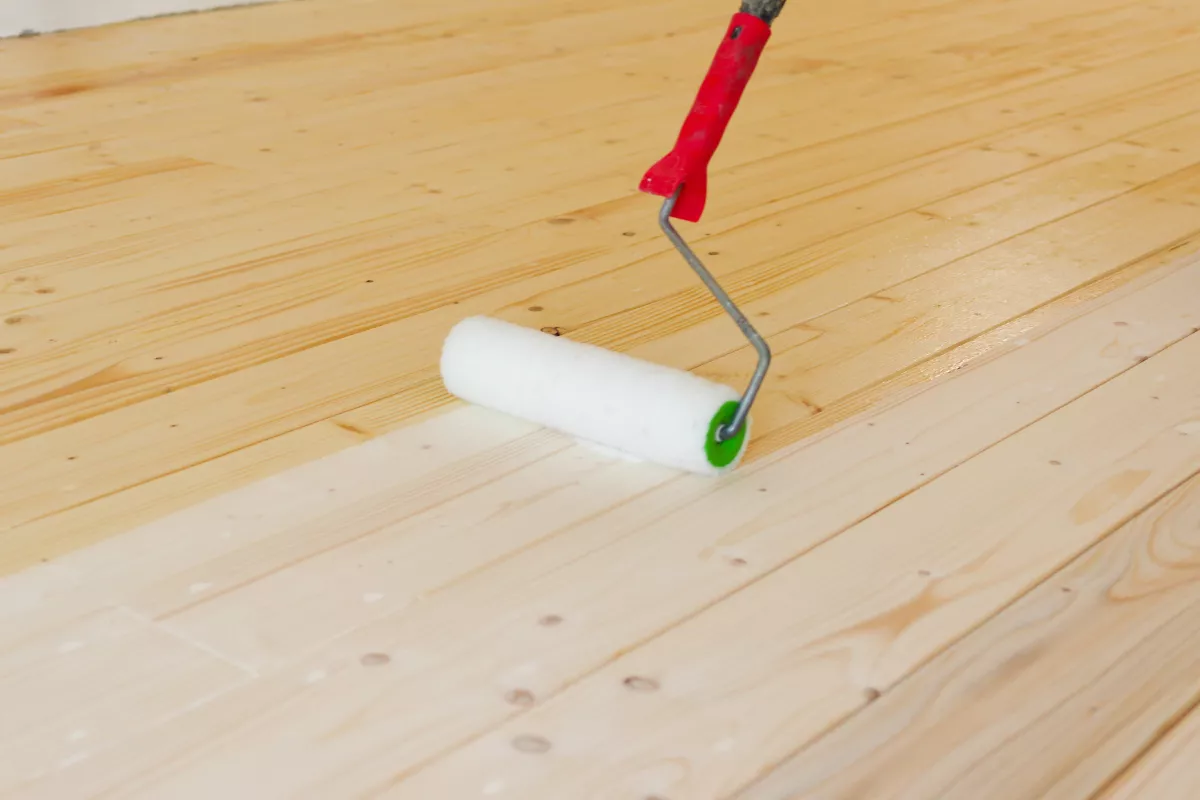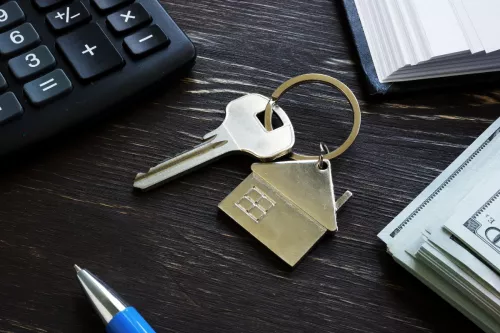Painted wood floors are an increasingly popular trend in home design, offering a unique and versatile aesthetic. Painted wood floors offer a unique way to personalize your space. While there are pros and cons, with the right preparation, paint, and maintenance, your painted floors can be a beautiful and lasting addition to your home.
Are you looking to explore various aspects of this trend, including its practicality, types of paint suitable for hardwood floors, and longevity? If so, you are reading the right post!
Is Painting Wood Floors a Good Idea?
Well, it all depends on your needs. Over time, hardwood floors accumulate nicks, scratches, and stains, detracting significantly from their beauty. Or, there might be instances when you envision a particular style for a room, and the existing hardwood floors simply don't fit in with that aesthetic.
In these cases, painting hardwood floors looks like a good solution, allowing you to customize them to your liking. However, it's important to consider several advantages and disadvantages before proceeding:
Pros of Painted Wood Floors
Breathe new life into aging floors
As the years go by, hardwood floors inevitably begin to reveal signs of wear and tear. While in some cases, this aging can add character, more often than not, it leads to an unsightly appearance. Common indicators of this deterioration include visible scratches, scuffs, or faded color.
Although attempting to repair these imperfections is an option, applying a layer of quality paint can effectively rejuvenate and refresh them.
Aesthetic Flexibility
Painting allows you to choose from a wide range of colors and designs, enabling you to match any room's décor or create a focal point. Painted floors offer unique possibilities that aren't attainable with carpet, tile, or area rugs.
For instance, painting hardwood floors white can create a cozy, country cottage ambiance. The flexibility to choose any color or pattern allows for the crafting of distinct designs and specific motifs. Such customization simply can't be achieved with a stained wood floor.
Cost-Effective
Painting is generally less expensive than refinishing or replacing hardwood floors, offering both affordability and appealing results. Typically, this project can be completed in just one weekend, requiring only a few hours of work each day.
Quick Transformation
Painting can quickly change the appearance of a room without the need for major renovations. Many individuals find the appearance of painted floors more appealing than bare hardwood, particularly if the wood has been re-stained.
Paint offers the opportunity to showcase your creative side, enabling you to incorporate designs and patterns onto your floor. Alternatively, opting for a uniform solid color is also an option. The distinctive aesthetic that painting provides is something that cannot be replicated by bare wood.
Cons of Painted Wood Floors
Maintenance and Durability
One significant downside of painted wood floors is their maintenance and durability. Unlike natural hardwood, painted floors are more prone to showing wear and tear such as scratches and chips, especially in high-traffic areas. This means they often require more frequent touch-ups and careful upkeep to maintain their appearance, which can be both time-consuming and potentially costly in the long run.
Reduces Natural Wood Appeal
The rich textures, unique grain patterns, and warm tones inherent to hardwood are concealed under layers of paint. This alteration can diminish the organic appeal and timeless quality of wood, potentially impacting the overall aesthetic and even the resale value of a home for those who prefer the classic look of natural wood.
Susceptible to Damage
Painted floors tend to crack, chip, and flake more easily. Although these issues can be fixed relatively simply, they may frequently require attention, potentially becoming a regular task on your maintenance list.
Reduced Buyer Attraction
Potential homebuyers often perceive painted wood floors as a costly renovation challenge, especially if they prefer the natural wood look. This perception could impact their interest in your property or influence the final sale price.
Increased Cost for Restoration
If you eventually decide to restore your floors to their original wood finish, be prepared for a more complex, time-consuming, and expensive process. Sanding and refinishing painted floors require additional effort and resources compared to untreated wood.
Difficulty in Reversal
Removing paint to return to the original wood can be labor-intensive and costly. If you decide to return to the original wood aesthetic, removing the layers of paint is not only labor-intensive but also requires significant sanding and refinishing. This task can be both costly and time-consuming, often necessitating professional assistance to restore the natural beauty of the hardwood floors effectively.
What Kind of Paint Do You Use on Hardwood Floors?

Typically, oil-based or latex paints are preferred due to their durability and ease of cleaning. Oil-based paints offer a tougher finish, making them ideal for high-traffic areas, but they take longer to dry and can have a stronger odor. Latex paints, on the other hand, are easier to apply and dry faster, but may not be as durable in the long term.
Epoxy paints are also a great option for their exceptional durability and resistance to damage. Additionally, using a specific porch and floor paint is recommended, as these are formulated to handle the demands of floor traffic and can provide a more resilient finish.
Regardless of the type, it's crucial to prepare the floor properly and consider using a primer before painting and a sealant afterwards for additional protection.
How Long Does a Painted Wood Floor Last?
On average, a well-maintained painted floor can last anywhere from 2 to 10 years before needing a repaint. The longevity of a painted wood floor can vary based on the kind of paint applied and the level of foot traffic in the area.
Within just a few years, the floor may start to show signs of wear such as peeling, cracking, or chipping. This wear and tear can lead to areas of the original wood becoming exposed, often presenting a stark contrast in color compared to the applied paint.
People also ask
Can I paint any wood floor?
Yes, nearly any wood floor can be painted, but the key to a successful paint job lies in proper preparation and choosing the right type of paint. Before painting, the floor should be thoroughly cleaned, sanded to remove the old finish, and primed to ensure good adhesion of the paint.
How to paint hardwood floors?
Revitalizing solid hardwood floors with paint is a cost-effective alternative to re-polishing, adding a distinctive touch to your space, especially when opting for striking colors like white. It requires dedication and patience, but by following these straightforward steps, you can achieve professional results.
Surface Preparation
The success of any painting project lies in thorough preparation. Start by cleaning the polished hardwood floors with a mop to eliminate dirt and residue. After drying, sand the floor lightly. You don't need to sand down to the bare wood for this project.
Sanding
A good sanding is crucial for paint adhesion. Use 120 grit sandpaper on an electric sander for efficiency. After sanding, sweep the room and vacuum to remove fine particles.
Painting
Now, apply your chosen color. Since the surface is already coated, a primer isn’t necessary. Apply the paint with a floor finish applicator, brush, or short nap mohair roller, ensuring a wet edge and avoiding bubbles.
Finishing Up
Patience is key after painting. Avoid walking on the floor for 24 hours and wait 72 hours before reintroducing heavy furniture or traffic to ensure the best outcome for your newly transformed floor.

 Marcio Vasconcelos
Marcio Vasconcelos





